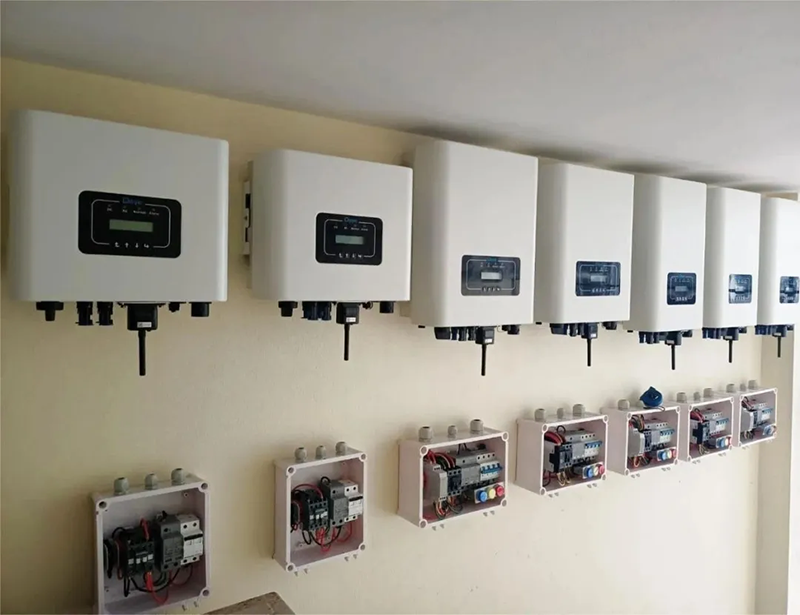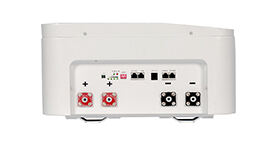Overvoltage protection function of photovoltaic inverter
In the entire photovoltaic system, "power grid overvoltage" is a more frequent problem, especially in areas where the power grid is weak and the grid-connected capacity is large, such problems are more common, so the overvoltage protection function is very important. This article will take you to understand the principle of "overvoltage protection function" and corresponding solutions.

Inverter overvoltage protection function
The overvoltage protection function of the photovoltaic inverter means that when the AC voltage of the inverter network port exceeds the upper limit of the grid voltage set by the inverter, the inverter can automatically cut off the relay of the grid port or reduce the output power to avoid damage to the electrical load in the line because of overvoltage.
The working principle of inverter overvoltage protection
The working principle of photovoltaic inverter overvoltage protection is mainly based on voltage detection and control system. When the power grid input voltage exceeds the maximum power grid voltage allowed by the inverter, the voltage detection circuit inside the inverter will quickly sense the abnormal situation and trigger the control system to take corresponding protection measures. The control system will automatically cut off the circuit or reduce the output power according to the preset protection strategy to ensure the safe and stable operation of the system.

The importance of inverter overvoltage protection
The overvoltage protection function of photovoltaic inverters is crucial to ensure the safe operation of photovoltaic systems, mainly reflected in the following aspects:
Prevent system damage: Excessive voltage can damage electronic components and even cause a fire. Overvoltage protection can cut off the circuit or reduce the output power in time to avoid damage and accidents.
Improve system stability: Ensure that the system can run stably when the voltage fluctuations are large, improving system reliability.
Extend system life: By cutting off the circuit or reducing the output power in time, protect electronic components from damage and extend the service life.
Reduce maintenance costs: System damage and accidents can be avoided, thus reducing maintenance costs and improving economic efficiency.
Common inverter power grid overvoltage causes and solutions
The main reasons are:
1. The installed capacity of photovoltaic in the same area is too large and the utilization rate is low;
2. Multiple single-phase inverters are integrated into a phase line;
3. The cables used in the connecting node of the inverter are too long, too thin, are wrapped, or the cable material is unqualified.
4. The distance between the connecting point and the transformer in the platform area is far.
Solution:
1. Check whether the terminals of the inverter AC power cables are loose, resulting in increased wire resistance.
2. The line distance between the inverter and the network is as short as possible. When the distance cannot be changed, the appropriate diameter of the photovoltaic AC cable is thickened;
3. When multiple inverters are connected to the grid, select a reasonable cable diameter based on the current after the converging.
4. Close to the platform transformer as much as possible;
5. Multiple single-phase inverters are connected to the grid as evenly as possible to the three-phase live line;
6. Power grid transformation: increase the specifications of power grid transmission cables and add transformers.
Hot News
-
Meet ANBOSUNNY at RENWEX 2024
2024-06-18
-
Anbosunny Successfully Participated in Solar & Storage Live Philippines 2024
2024-05-23
-
Meet us at The Future Energy Show Philippines 2024
2024-05-16
-
Anbosunny Successfully Participated in Solar & Storage Live South Africa 2024
2024-03-22
-
Exciting News! Anbosunny to Showcase Cutting-Edge Home Energy Storage Solutions at Major Trade Shows in 2024
2024-03-18
-
The booming European home solar market: Opportunities for Chinese companies
2023-12-22
-
Ningbo Anbo Showcases Renewable Energy Innovations at Riyadh Solar & Future Energy Shows
2023-11-01

 EN
EN
 AR
AR
 BG
BG
 HR
HR
 CS
CS
 DA
DA
 NL
NL
 FI
FI
 FR
FR
 DE
DE
 EL
EL
 HI
HI
 IT
IT
 JA
JA
 KO
KO
 NO
NO
 PL
PL
 PT
PT
 RO
RO
 RU
RU
 ES
ES
 SV
SV
 TL
TL
 ID
ID
 UK
UK
 VI
VI
 TH
TH
 FA
FA
 AF
AF
 MS
MS
 BE
BE
 BN
BN
 LO
LO
 NE
NE
 MY
MY
 KK
KK
 SU
SU
 UZ
UZ
 KY
KY
 XH
XH









